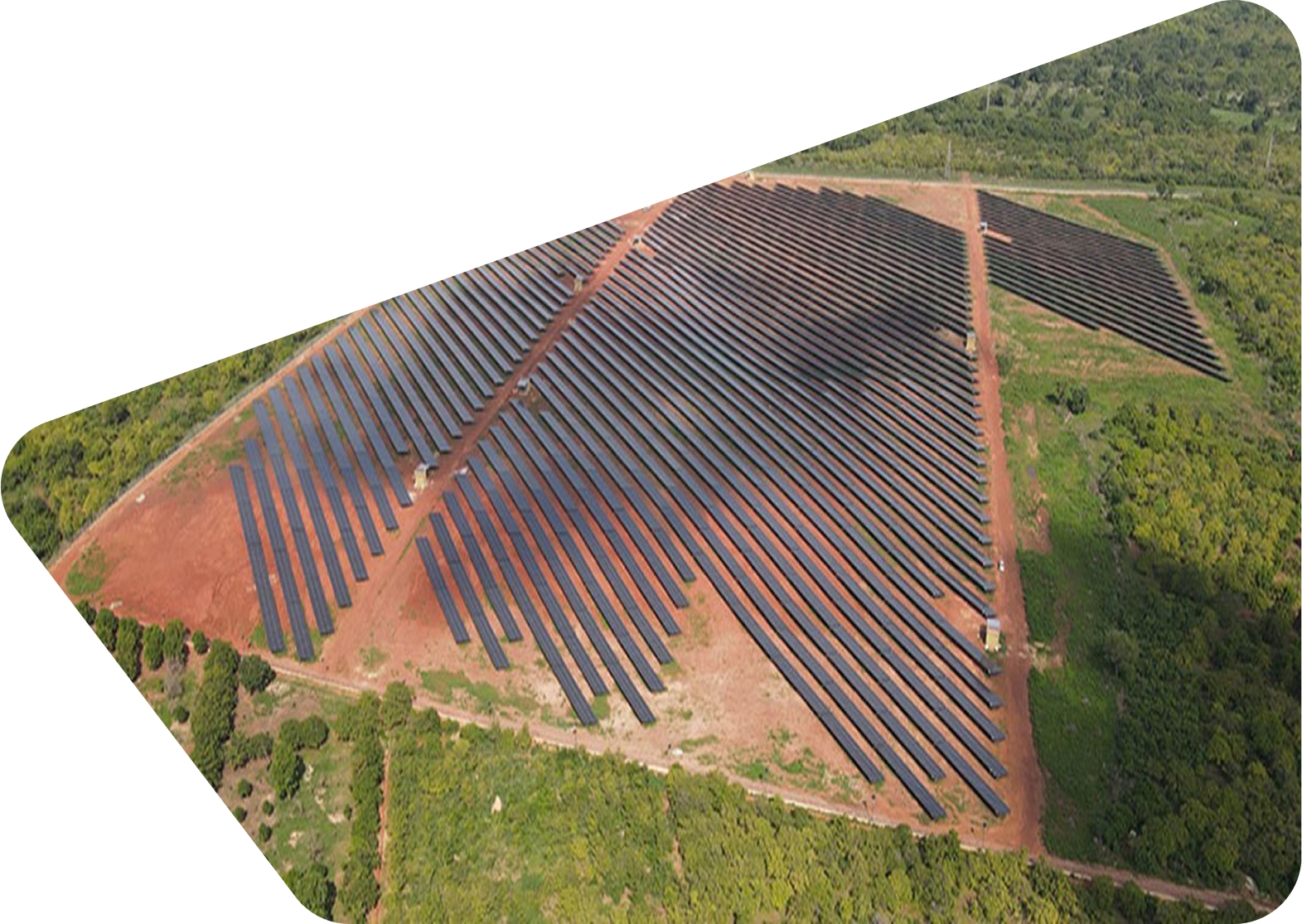Haul Road from Gbongogo Main to Koné
The Gbongogo haul road is 38.1 km in length and traverses a sparsely populated area between the two sites and has been designed to avoid villages, defined forest areas and minimise interactions with existing public roads. The road incorporates a pedestrian corridor leading to underpasses along the alignment. Access to the road will be restricted by construction of safety berms along the entire length of the road. Traffic control will be provided at all intersections with the public roads. The haul road alignment has been designed to limit the number of water courses impacted by the road with culverts provided at all main water intersections and a bridge to be constructed at the crossing of the Marahoué River.
Water
Water will be sourced from the nearby Marahoué river, from pit dewatering and a supplementary borefield. The river abstraction facility will be constructed adjacent to the Marahoué River bridge approximately 26 km north of the water storage facility (“WSF”). The extraction facility will comprise a sump to allow for harvesting of water by a pump mounted on a bridge support column. Pumping will only take place in the wet season, normally from June to December, provided minimum flows are met. Hydrological assessment of the river catchment indicates that the river will have sufficient excess flow during this period and will not affect downstream users. Harvested river water and pit de-watering will be pumped to an off-stream WSF. Surface runoff from the Koné mining area, ROM pad and stockpiles will gravity flow to the WSF. The WSF will have a capacity of approximately 7.2 million m3 and will enable accumulation of water during the wet season and a gradual drawdown in the dry season. In addition, water will be recycled from the tailings storage facility to the process water pond. Surface runoff from the Gbongogo mining area, will be collected in two sediment ponds and overflow to the Marahoué river following sediment settling.
Tailings
The TSF will comprise of a single cell confined by a cross valley embankment which will be raised annually until the mining in Koné South pit is completed early in year 9. The TSF basin will be lined with HDPE within the normal operating pond areas and a compacted soil liner elsewhere to reduce seepage. In addition, a system of underdrainage, embankment drainage and sub-liner drainage will be constructed to reduce seepage and aid consolidation of the tailings. Tailings will be deposited subaerially with the supernatant pond located away from the embankment. Water will be recovered from the supernatant pond by a suction pump with floating intake located in a channel excavated adjacent to an access causeway. Following the completion of the mining early in year 9, tailings will be deposited into the Koné South pit via four spigots located around the perimeter of the pit. Water will be extracted from the decant pond using floating intake lines to position the pumps above the pond elevation. The pond volume will be at its highest at the first year as the TSF pond will be pumped to the pit to let the TSF commence the closure process. The TSF will be closed and rehabilitated after deposition is transferred to the pit. Closure spillways will be formed to prevent water accumulating on the facilities and a waste rock cover will be placed over the tailings prior to topsoiling and revegetation.
Power
In Côte d’Ivoire, National Grid is managed by the Compagnie Ivoirienne d'Electricité (CIE) and provides the primary electricity utility, generation, transmission, and distribution of electricity nationwide. It focuses on guarantying energy access, including to the mining industry, through grid extensions and off-grid solutions to achieve universal electrification. CIE plays a key role in Côte d'Ivoire's renewable energy transition, collaborating with independent power producers to incorporate projects like the Ferké solar plant into the National Grid.
Power will therefore be drawn from the national grid operator, Compagnie Ivoirienne d’Electricite, via a new 225kV transmission line connecting to existing power lines located approximately 20km from the processing plant area. The CIE has confirmed capacity to meet the demand requirements for the Koné project and Montage has conducted a power system study with CIE which supports the delivery of high-quality power. A project management agreement has been executed with CIE and works commenced on-site with clearing for the sub-station.
Energy in Côte d’Ivoire
In April 2024, Côte d'Ivoire welcomed its first solar power plant in the Boundiali region, 40km away from the Koné Gold Project. The solar plant, with an initial capacity of 37 MW, is a key step towards the country's goal of increasing renewable energy to 45% by 2030. The solar plant provides electricity to the state-owned utility, Compagnie Ivoirienne d’Electricité. An expansion to 83 MW is underway and is expected to be completed in the course of 2025, set to be the largest solar facility in West Africa.
In February 2025, the government of Côte d’Ivoire launched the construction of the Ferké Solar photovoltaic solar power plant, located in Sokhoro. The construction is expected to be completed within 12 months in early 2026, for a total cost of XOF 41 billion. With a 52 MW peak activity, this power plant will be the second in the country. The Ferké solar plant is paving the way for additional solar projects in Côte d’Ivoire, with a commitment to deliver 600 MW of solar energy by 2030.
Boundiali Solar Plant in Côte d’Ivoire, inaugurated in 2024
